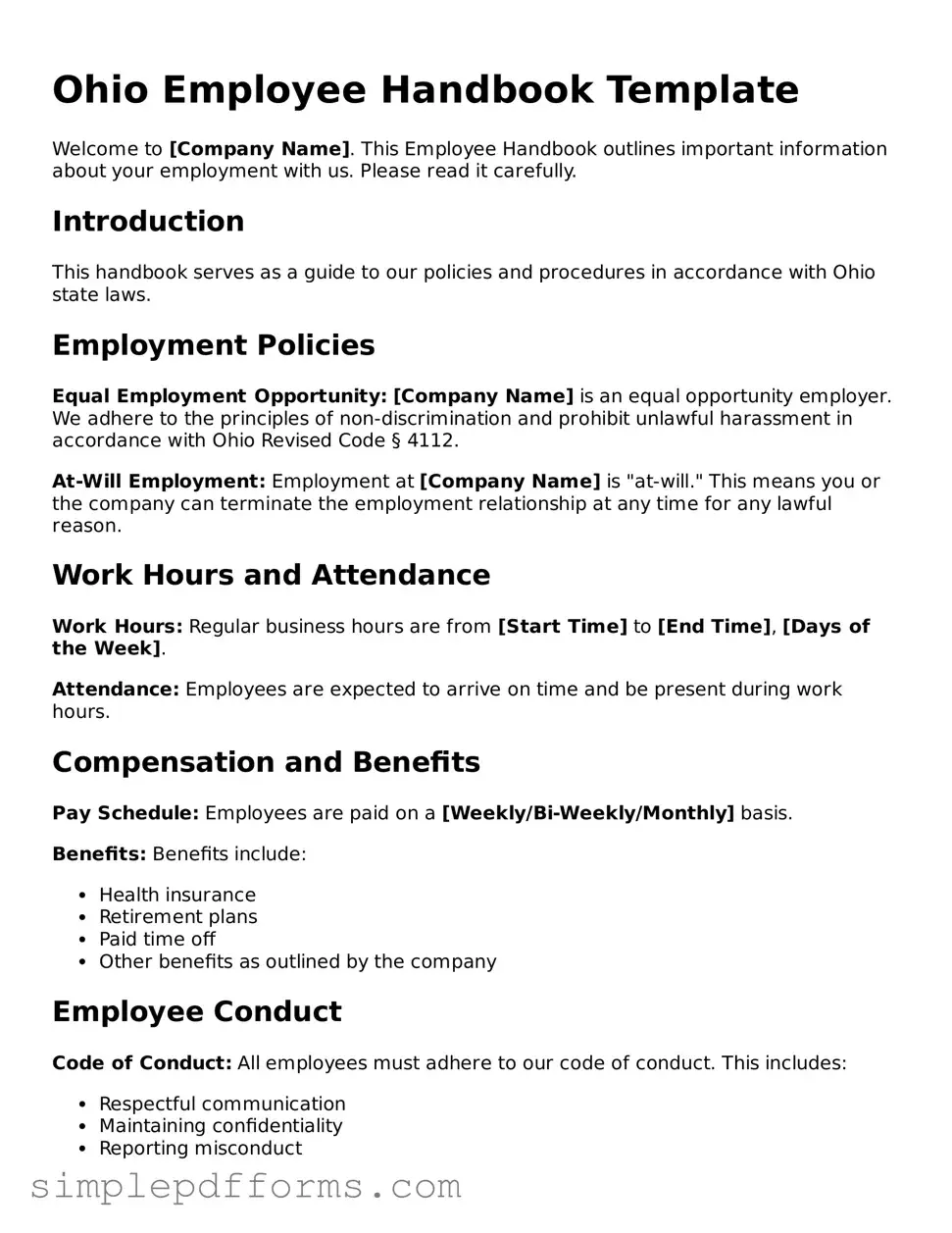Ohio Employee Handbook Template
Welcome to [Company Name]. This Employee Handbook outlines important information about your employment with us. Please read it carefully.
Introduction
This handbook serves as a guide to our policies and procedures in accordance with Ohio state laws.
Employment Policies
Equal Employment Opportunity: [Company Name] is an equal opportunity employer. We adhere to the principles of non-discrimination and prohibit unlawful harassment in accordance with Ohio Revised Code § 4112.
At-Will Employment: Employment at [Company Name] is "at-will." This means you or the company can terminate the employment relationship at any time for any lawful reason.
Work Hours and Attendance
Work Hours: Regular business hours are from [Start Time] to [End Time], [Days of the Week].
Attendance: Employees are expected to arrive on time and be present during work hours.
Compensation and Benefits
Pay Schedule: Employees are paid on a [Weekly/Bi-Weekly/Monthly] basis.
Benefits: Benefits include:
- Health insurance
- Retirement plans
- Paid time off
- Other benefits as outlined by the company
Employee Conduct
Code of Conduct: All employees must adhere to our code of conduct. This includes:
- Respectful communication
- Maintaining confidentiality
- Reporting misconduct
Safety and Health
Workplace Safety: [Company Name] is committed to providing a safe work environment. Employees are encouraged to report any safety concerns to their supervisor.
Termination of Employment
Voluntary Termination: Employees should provide a [Number of Weeks] notice before resigning.
Involuntary Termination: The company reserves the right to terminate employment for serious infractions, including but not limited to misconduct or violation of company policies.
Acknowledgment
By signing below, you acknowledge that you have read this Employee Handbook, understand its contents, and agree to abide by the company policies.
Employee Name: _________________________________
Employee Signature: ___________________________
Date: ____________________
